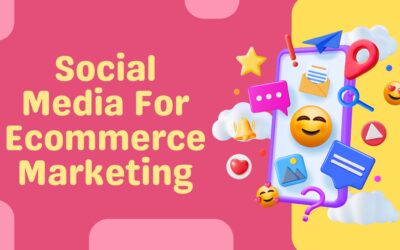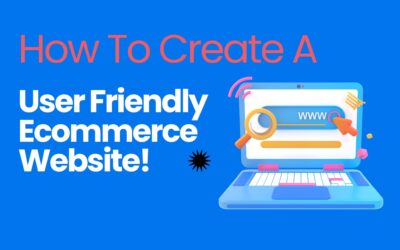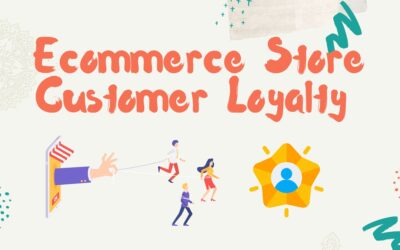How To Effectively Use Email Marketing In Ecommerce?
In the competitive world of ecommerce, email marketing is a powerful way to drive conversions and build customer loyalty.
On average, people receive 121 emails daily, so it’s essential to create campaigns that truly resonate with your audience.
To succeed in ecommerce email marketing, you need to understand your target audience, their preferences, and behaviors.
But why do you need email marketing in ecommerce? See this –
- In 2024, email marketing revenue is projected to surpass $9.5 billion.
- The return on investment (ROI) for email marketing campaigns is impressive, with more than half of marketing professionals reporting a 100% improvement rate in their campaigns’ ROI.
- 58% of surveyed professionals rely on marketing automation for email, more than for content and social media management.
- The average open rate for ecommerce marketing emails stands at 15.68%, while the average click rate is 2.01%.
- Cart abandonment emails have been shown to boost sales by 4.43% across all ecommerce sectors.
- 61% of subscribers/customers would like to receive promotional emails every week.
- The highest ROI, with $45 per $1 spent, belongs to the retail, ecommerce, and consumer goods industries.
- Ecommerce emails boast one of the highest deliverability rates at 96%3.
Product replenishment emails enjoy a 53.6% click-to-open rate, the highest in ecommerce email marketing strategies.
By creating content tailored to individual subscribers, you can unlock the full potential of email marketing and reap significant rewards.
But what makes an ecommerce email campaign successful?
What Are The Key Elements Of A Successful Ecommerce Email Campaign?
To build a successful ecommerce email campaign, you need to get a few key elements right.
First, you need to segment your audience so your message lands with the right people.
Then, personalize your message so it feels tailored to each recipient.
And finally, rigorously test and optimize your results to make sure you’re getting the most bang for your buck.
Segmentation
Dividing an email list into targeted groups based on specific criteria is a crucial element of a successful ecommerce email campaign. This is called segmentation.
By doing so, ecommerce businesses can tailor content, improve engagement, and increase conversions.
Demographics, purchase history, and behavior are common criteria used for segmentation.
This allows for targeted promotions and personalized content.
Personalization
Personalization is a crucial element of a successful ecommerce email campaign. It’s about tailoring content to resonate with individual subscribers, which fosters a deeper connection and drives conversions.
To achieve this, you can use several strategies.
First, you can use dynamic content. This involves using subscriber data to display relevant products or offers.
You can also address subscribers by name to create a sense of familiarity. This tactic is called ‘name and greet.’
Another approach is to use behavioral triggers. This involves sending targeted emails based on subscriber actions, such as cart abandonment.
For instance, you can send a reminder email to subscribers who left items in their cart.
Product recommendations are also effective. You can suggest products based on subscribers’ purchase history or browsing behavior.
This helps subscribers discover new products they might like.
Results Testing (A/B)
Data-driven insights are crucial for ecommerce email campaigns, and that’s where results testing comes in.
Also known as A/B testing, this involves creating two versions of an email with differences in subject lines, CTAs, or content.
By comparing the performance of these two versions, ecommerce businesses can identify which one works better.
This analysis helps refine their email strategy, leading to improved engagement, conversion rates, and ultimately, revenue.
Call-To-Action
Clear calls-to-action (CTAs) are crucial in driving conversions.
They explicitly tell customers what action to take, and their strategic placement in ecommerce email campaigns can significantly boost sales.
An effective CTA should be prominent, standing out from the rest of the content.
It should be action-oriented, using verbs like ‘Shop Now’ or ‘Get 20% Off’ to prompt customers to take action.
Creating a sense of urgency is also key, as it encourages customers to act quickly.
Content Relevance
Crafting content that resonates with your audience is crucial in ecommerce email campaigns.
You want to capture their attention and drive conversions.
To do this, make sure your content aligns with their interests and needs.
Segmenting your audience helps you tailor your messaging and provide personalized recommendations.
Focus on the benefits, features, and unique selling points that resonate with your audience and encourage them to engage.
Importance Of Ecommerce Store Email Campaigns
Email campaigns are a must-have for ecommerce stores.
They help create personalized connections with customers, build a loyal community, and drive repeat sales.
Plus, email marketing is a cost-effective way to reach customers, giving businesses a high return on investment.
Personalized Customer Engagement
Building strong relationships with customers is crucial. One effective way to do this is through personalized email campaigns. By tailoring content to individual preferences, ecommerce stores can boost engagement and drive sales.
Personalized customer engagement offers several benefits. For one, targeted content resonates with customers, increasing open rates and click-throughs. It also enhances the customer experience, showing customers that their needs and preferences matter.
When customers feel valued, they’re more likely to become loyal and repeat business. Finally, relevant content drives sales and revenue growth.
In short, personalized customer engagement is key to fostering loyalty, driving sales, and growing revenue. By making customers feel seen and heard, ecommerce businesses can reap significant benefits.
Cost-Effective And High Roi
When it comes to getting bang for your buck, email marketing is a clear winner. For every dollar invested, you can expect an average return of $44. This makes it one of the most cost-effective marketing strategies out there, especially for ecommerce stores. The ROI is unmatched by many other marketing channels.
Take a look at how email marketing stacks up against other popular options:
|
Marketing Channel |
Average ROI |
|
Email Marketing |
$44 |
|
Social Media |
$12 |
|
Search Engine Optimization (SEO) |
$8 |
|
Pay-Per-Click (PPC) |
$2 |
The numbers speak for themselves. If you want to maximize your marketing budget, email marketing is an attractive option that’s hard to ignore.
Driving Repeat Business
Driving repeat business is just as important as acquiring new customers for ecommerce growth. Repeat customers are more likely to make subsequent purchases, leading to increased revenue and growth.
Email marketing can be a powerful tool to drive repeat business.
You can send personalized product recommendations based on customers’ past purchases or browsing history. This shows you care about their preferences and can lead to more sales.
Offer loyalty rewards, discounts, or early access to new products to loyal customers. This makes them feel valued and appreciated, which can lead to more repeat business.
If you have inactive customers, target them with win-back campaigns to re-engage them with your brand. This can be an effective way to get them shopping with you again.
Send birthday greetings with special offers to make customers feel valued. This is a great way to build customer loyalty and drive repeat business.
Valuable Customer Insights
Through targeted email campaigns, ecommerce stores can gather valuable customer insights.
These insights enable them to refine their marketing strategies, improve customer experiences, and ultimately drive business growth.
By analyzing email open rates, click-through rates, and conversion rates, ecommerce stores can identify customer preferences, behavior, and pain points.
This allows for data-driven decision-making and personalized marketing efforts.
Building A Strong Brand Community
Building a strong brand community is crucial for ecommerce stores. It helps cultivate loyalty, drive engagement, and increase customer retention – all essential components of a successful email marketing strategy.
To build a strong brand community, consider the following four strategies:
Provide loyal customers with exclusive discounts and promotions to make them feel valued. This approach shows customers that you appreciate their loyalty and encourages them to continue supporting your brand.
Create content that resonates with your target audience and addresses their specific needs. This type of content helps build trust and establishes your brand as an authority in its industry.
Encourage customers to share their experiences with your brand, and showcase them on social media. User-generated content helps build trust and credibility, as potential customers are more likely to trust reviews and testimonials from real customers.
Stay in touch with customers through regular email newsletters and updates. Regular communication helps keep customers informed about new products, promotions, and company news, which can help drive engagement and sales.
Features Of A Good Email For Ecommerce Marketing
When you’re creating email marketing campaigns for ecommerce, there are certain must-haves that can make or break your success.
A good email should grab attention, drive conversions, and make your brand stand out.
To create an email that resonates with your target audience, you need to get a few things right.
Start with a subject line that pops, followed by content that’s both compelling and easy to read.
Make sure your message is relevant to your audience and includes a clear goal.
And don’t forget to plan your preview text – it’s the first thing many people will see.
Great Subject Lines
Crafting great subject lines is a crucial part of ecommerce marketing. They’re the first point of contact between your brand and the customer, and they decide whether the email gets opened or trashed.
A good subject line should be short, attention-grabbing, and clearly communicate what’s inside the email. It should also avoid spam triggers and misrepresentation. Plus, it needs to look good on mobile devices.
Well-written subject lines can make a big difference in email open rates and drive conversions.
Compelling And Easy To Read
A well-designed ecommerce email should have a clear and concise message that resonates with its recipients.
To achieve this, it’s essential to create content that is both compelling and easy to read.
Using a conversational tone, breaking up text into bite-sized chunks, and incorporating visually appealing elements like images and icons can help.
They’re Relevant
Relevant content is crucial in ecommerce emails because it speaks directly to the recipient’s needs, interests, or pain points. This approach builds a stronger connection and encourages engagement.
Relevant content has four key aspects:
- Personalization: Tailor content to individual preferences and behaviors. This makes the email more relatable and engaging.
- Timeliness: Send emails at the right moment to maximize their impact. This could be during a sale, a birthday, or another significant event.
- Segmentation: Divide your audience into groups based on demographics, interests, or behaviors. This helps you target specific groups with content that resonates with them.
- Dynamic content: Use customer data to create unique experiences. This could include personalized product recommendations or special offers.
They Have Goals
Successful ecommerce email campaigns always have specific, measurable goals that drive customer action and ultimately, revenue growth. A good ecommerce email should have clear objectives, like increasing sales, encouraging repeat business, or promoting new products. This focus helps marketers create targeted content that resonates with their audience.
|
Goal |
Example |
|
Drive sales |
Offer a limited-time discount on a best-selling product. |
|
Encourage repeat business |
Send a loyalty program update with exclusive perks. |
|
Promote new products |
Showcase a new collection with a special introductory offer. |
|
Improve engagement |
Host a survey or feedback session to gather customer insights. |
Well-Planned Preview Text
Crafting effective preview text is a must in ecommerce email marketing. This teaser determines whether the recipient will open the email or delete it.
A well-planned preview text should be concise and attention-grabbing, aligning with the email’s content and tone.
It should avoid spam triggers and promotional language, enticing the recipient to open the email.
5 Effective Ecommerce Store Email Strategies
Building strong customer relationships and driving conversions are crucial goals for ecommerce businesses.
To achieve these goals, they can use various email strategies. A well-designed and responsive email can make a big difference.
Automated email marketing can also be effective.
Additionally, sending targeted campaigns to loyal customers and those who abandoned their carts can bring in more sales.
1. Create A Welcome Email Series
Creating a well-structured welcome email series is a must for ecommerce stores. It sets the tone for the customer’s journey and has a significant impact on long-term engagement and loyalty. A well-crafted series can increase conversions, reduce churn, and build brand affinity.
When building your series, make sure to include these essential elements:
- Introduction and thank you: Welcome new subscribers and express gratitude for their interest in your brand.
- Brand story and values: Share your brand’s mission, vision, and unique selling proposition to help subscribers understand what sets you apart.
- Exclusive offer or discount: Provide an incentive to encourage a first purchase or repeat business. This can be a discount, free shipping, or some other perk that motivates subscribers to engage with your brand.
- Call-to-action (CTA): Encourage subscribers to explore your website, social media channels, or other platforms where they can engage with your brand.
2. Reward Loyal Customers
Loyal customers are the backbone of any ecommerce business, and showing appreciation for their repeat business is essential.
By implementing a loyalty program, you can offer exclusive perks like discounts, early access to new products, or premium customer service.
This helps build long-term loyalty and encourages customers to keep coming back.
You can also strengthen relationships by sending personalized emails to celebrate milestones, like purchase anniversaries.
This kind of recognition drives customer retention and makes your customers feel valued.
3. Use A Well-Designed And Responsive Email
A well-designed email is crucial in ecommerce. Did you know that nearly 70% of consumers delete emails that don’t display correctly on their mobile devices? That’s why a responsive design is essential for capturing and holding attention.
To create an effective email design, keep the following in mind:
- Keep it simple and clean: Avoid clutter and prioritize content. This way, your message stands out and readers focus on what matters.
- Choose clear typography: Pick readable fonts and font sizes that make it easy for readers to scan your email.
- Optimize your images: Compress them to reduce loading time, ensuring your email loads quickly and smoothly.
- Design for mobile: Ensure a seamless experience across devices, so your email looks great whether readers open it on their phone, tablet, or computer.
4. Send An Abandoned Cart Email Series
Online shoppers often leave items behind, with nearly 70% of carts getting abandoned.
This makes it crucial to have a plan to win back those lost sales.
A well-crafted abandoned cart email series can help.
This involves sending a series of personalized, timely, and relevant emails to remind customers about their abandoned items.
These emails should offer incentives to complete the purchase and re-engage with your brand.
5. Leverage Ecommerce Email Marketing Automation
By leveraging the power of automation, ecommerce email marketing can become a streamlined and efficient process that produces remarkable results.
Automation allows businesses to target specific customer segments, personalize messages, and send timely communications, leading to increased engagement, conversions, and loyalty.
Automation strategies include sending welcome emails to onboard new customers.
- Abandoned cart reminders reduce cart abandonment.
- Birthday greetings foster loyalty.
- Win-back campaigns re-engage inactive customers.
How often should I send emails to my eCommerce subscribers?
Finding the right frequency for sending emails to your eCommerce subscribers is key.
You don’t want to overwhelm them, but you also don’t want to neglect them.
As a general rule, it’s best to send emails no more than once a week.
Ideally, you should space them out every 10-14 days.
This way, you can stay top of mind without being too pushy.
What is the best time for sending ecommerce emails?
Timing is everything in ecommerce email marketing. Understanding the optimal sending time can significantly impact open rates and conversions. Research shows that sending emails during peak hours can increase engagement.
The best times to send ecommerce emails are:
- 10 am – 11 am: People take a morning break at work, making it an ideal time to grab their attention.
- 2 pm – 3 pm: After lunch, people are more relaxed and likely to engage with your email.
- 4 pm – 5 pm: Before the end of the workday, people are wrapping up tasks and checking their emails.
- 7 pm – 8 pm: During evening downtime, people check their personal emails, making it a good time to send promotional emails.
What are some common mistakes to avoid in eCommerce email marketing?
Crafting effective ecommerce email marketing campaigns can be a challenge.
Common mistakes can hinder engagement, damage brand reputation, and ultimately, hurt sales.
Poorly targeted campaigns are a major mistake.
Generic subject lines and a lack of personalization also lead to failed campaigns.
Failing to segment audiences and neglecting mobile optimization are other common errors.
Not tracking analytics is another mistake that can lead to campaign failures.
Which email platform is best for ecommerce?
Choosing an email platform is a crucial step in ecommerce email marketing. It can significantly impact the success of campaigns and, ultimately, the bottom line.
When picking an email platform, consider these key factors:
- Integration: Your email platform should seamlessly integrate with your ecommerce platform and other tools.
- Scalability: It should be able to handle growing subscriber lists and high-volume sends.
- Personalization: Look for robust personalization capabilities for targeted campaigns.
- Analytics: You’ll want advanced analytics and reporting for data-driven decision-making.
These factors will help you choose an email platform that meets your ecommerce needs.
Shall I attach images to my promotional emails?
When deciding whether to attach images to your promotional emails, consider the potential impact on email loading times and spam filter triggers.
Attaching large files can slow down email loading, leading to a poor user experience.
A better approach is to host images and link to them from your email.
This ensures faster loading times and reduces the risk of spam filters flagging your emails.
Wrapping Up
When it comes to email marketing in ecommerce, there are a few key strategies that can make all the difference.
To start, dividing your audience into segments based on demographics, purchase history, and behavior can help you tailor your emails to specific groups.
This kind of personalization, combined with dynamic content, behavioral triggers, and product recommendations, can lead to increased conversions.
A well-planned email campaign can drive sales, build customer loyalty, and boost your brand’s reputation.
By steering clear of common mistakes and choosing the right email platform, you can maximize your return on investment.
How To Effectively Use Social Media For Ecommerce Marketing?
How To Effectively Use Social Media For Ecommerce Marketing To boost ecommerce marketing, a strong...
How Do I Create A User-Friendly Ecommerce Website?
How Do I Create A User Friendly Ecommerce Website?Crafting a user-friendly ecommerce website...
Benefits of Ecommerce Store Customer Loyalty and How to Create It?
Benefits of Ecommerce Store Customer Loyalty and How to Create It?Building customer loyalty in...






